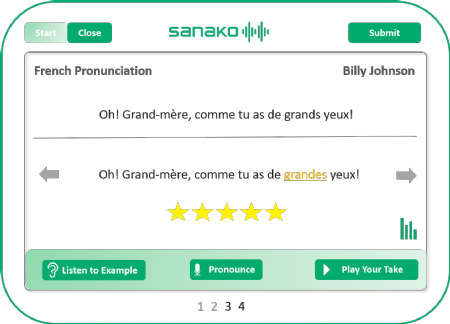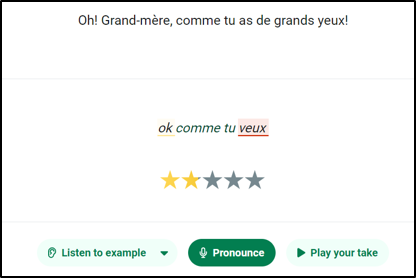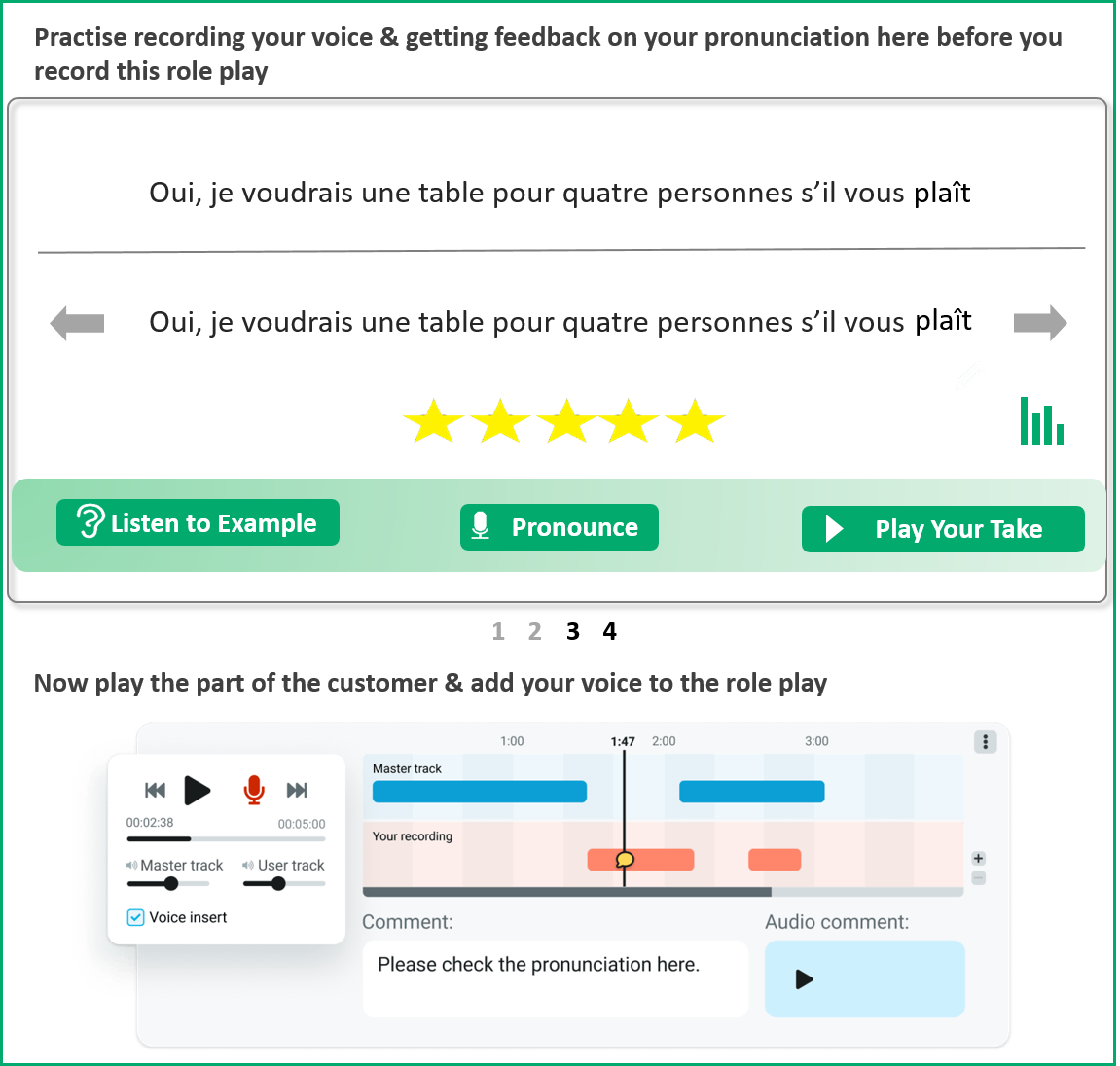Phonics and Pronunciation can be fun!

I was in a Ysgol Clywedog school in Wrexham a couple of weeks ago and watched the end of a Y9 lesson.
The pupils were using the Pronounce feature of Sanako Connect to practise their pronunciation and get immediate feedback from the software and the chance to practise it again and improve it.
Their teacher, Claire, told me that it’s the only time when the bell goes at the end of the day that they don’t want to pack up and go home, as they’re having so much fun with pronunciation.
What can Sanako Pronounce tool do?
 Well, you can type in a word, phrase or sentence, or even a paragraph (although it will split this up into individual sentences). The student can listen to an example of correct pronunciation at a variety of speeds, including slowed down to 1.25x the normal speed and either a male or female voice. They then record their own version, and they will be given feedback on the accuracy of their pronunciation in the form of zero to five stars
Well, you can type in a word, phrase or sentence, or even a paragraph (although it will split this up into individual sentences). The student can listen to an example of correct pronunciation at a variety of speeds, including slowed down to 1.25x the normal speed and either a male or female voice. They then record their own version, and they will be given feedback on the accuracy of their pronunciation in the form of zero to five stars
We know that all the research says, from John Hattie to the Education Endowment Foundation to the Rosenshine Principles of Instruction that receiving accurate, timely feedback is one of the best ways for students to make progress.
Phonics training and practice

In order for students to be able to pronounce language successfully, they should have been taught the ‘phonics’ rules of the language (not to be confused with ‘phonetics’).
I have created some phonics activities in Sanako Connect focused on micro-listening activities listening for a particular sound or ‘phoneme’, listening to and then practising a tongue twister with lots of examples of the focus phoneme in, and then pupils hear a series of new words (that they probably have not heard before) with the focus phoneme in and must transcribe them, a skill which they need to develop for the new 2026 MFL GCSE’s dictation component, and which is also a very useful language learning skill to develop in its own right.
Micro-listening activities
Students can listen to a series of words or phrases and then fill in the gaps of key ‘graphemes’ (the written representation of the sound). They can also listen to a song or a rhyme and do a tally of the number of times they hear the focus phoneme. This is automatically marked for you when they submit their answers. The teacher can provide some written feedback or record some audio feedback.
You can find out more about what Sanako Connect can do here www.sanako.co.uk or contact me through Linkedin.
Wendy Adeniji



